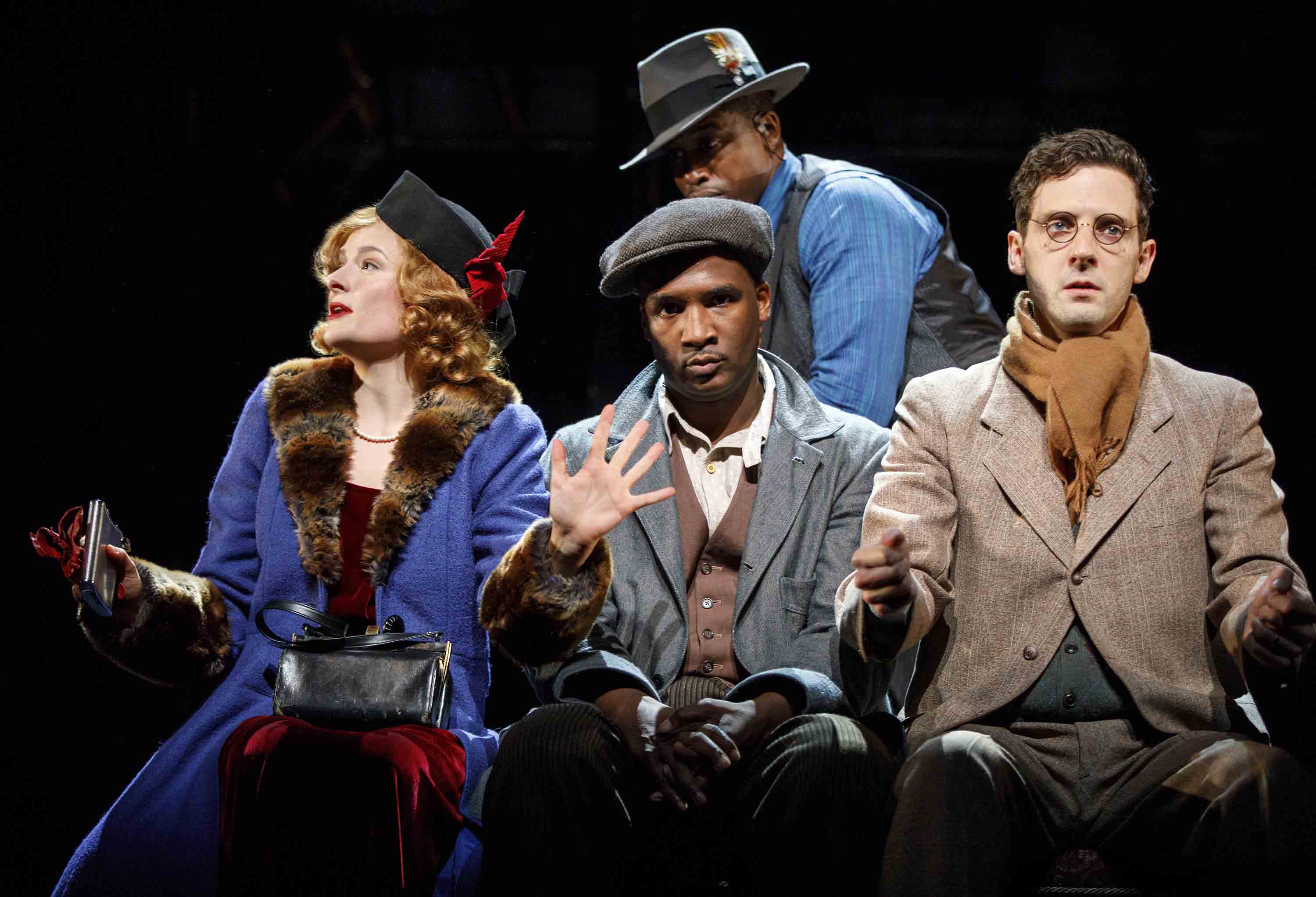
Last Friday night, the Yale Repertory Theatre began previews of Nambi E. Kelley’s adaptation of Richard Wright’s 1940 novel “Native Son.” Directed by Seret Scott, the production tells the sobering tale of a black man crushed by the weight of oppression and poverty and subject to a destiny determined by others.
Born in 1908 in the state of Mississippi, author Wright moved to Chicago in 1927 in a plea to escape the Jim Crow laws of the Deep South. Hopeful that moving North would eliminate some of the racial tension he faced at home, Wright was sorely disappointed to find that, though it was less overt than Jim Crow, the segregation and discrimination he faced in the North was still ever-present. Out of his frustration with this pernicious status quo that seemed to refuse to let him play a role in his own life, Wright penned one of the most highly regarded books of the 20th century: “Native Son.” The book was immensely popular and sold more than 250,000 copies within the first three weeks of its publishing.
Wright’s “Native Son” tells the story of Bigger Thomas, a young black man living on Chicago’s South Side in the 1930s. Bigger lives in a world where he is constantly confronted with racism, poverty and the expectations of others. He feels that his life is not directed by who he thinks he is, but by what others think of him.
Wright’s novel is heavy on exposition and has very little actual action, but Kelley’s adaptation forgoes his sequential narrative in favor of a nonlinear account. Her “Native Son” is not an easy work to stage, but director Scott does it effectively, jumping around in time deftly through swift transitions in the physical positions and mentalities of the characters. These time jumps help create a play-by-play mind map of what is going on inside Bigger’s head, deftly transitioning from the present action of the story to flashbacks that occur in Bigger’s recollection, and illustrate Bigger as plagued by memory, oppression and confusion, unable to find his way out of the dark.
Most of the crucial dialogue in the story is not between Bigger and other characters in the real world. Bigger, played by Jerod Haynes, is portrayed as subject to the whims of others through the presence of the Black Rat, played by Jason Bowen. The Black Rat represents the voice of negativity within Bigger and forces him onto the path of a destiny paved by the expectations of others. Without excusing the crimes he commits, Kelley paints a picture of a man subject to his society. From the beginning, he has been forced into the box of “black man.”
Haynes and Bowen work together effectively to show the conflict in Bigger’s head. Bowen, as the Black Rat, frequently presents his ideas in a calm and rational manner, as opposed to Haynes’ irascible Bigger. Often, this reasonable presentation leads one to agree with Bowen, despite the fact that, as the audience, we know that Bowen’s character is leading Bigger to inevitable tragedy. If even the audience can be convinced by Bowen’s Rat, it is no wonder that Bigger is as well. Scott’s direction and the performances of Haynes and Bowen make the audience experience Bigger’s confusion and conflict and create sympathy for his character.
The dark, dilapidated, urban set of the production, designed by Ryan Emens, effectively captures Bigger’s mindset — he is trapped in the dark, maze-like room of his mind, unable to see what his proper action should be, and we, as audience members, are similarly deprived of the light. In addition, the rusting metal background is reminiscent of the tenement buildings of New York City and bring to mind images of extreme poverty, violence and oppression that people of color faced, and still continue to face, in our cities. The bare-bones background also lends to the idea that Bigger has nowhere to hide and adds to the feeling of inevitability within the piece.
We cannot help but feel bad for Bigger. Despite the actions he takes, including his unintentional murder of Mary Dalton in the beginning of the play, we understand that these actions are the result of the systemic inequality of this society. And, ultimately, Bigger is defined not by his own action, but by the actions of others unto him.
Today, we no longer see the most obvious marks of racism that existed in Wright’s, and Bigger’s, time, like colored water fountains or segregated bus stops. But racism still exists, in gentrification and housing segregation, income disparity and racially charged killings by not only mass murderers but also policemen. It is almost as if we, like Bigger, have emerged from Wright’s Jim Crow South and moved to Chicago, just to find that it isn’t so different after all. The issues that “Native Son” presents still face us today, and the societal pressures that Bigger faced to act a certain way still plague America’s African-American community. “Native Son” reminds us to challenge social norms, and that the fight to put an end to racism in the United States is still not over.
“Native Son” opened Thursday, Nov. 30, and will be showing at the Yale Repertory Theatre until Dec. 16. Tickets are 25 dollars for students.
Jake Kalodner | jake.kalodner@yale.edu .







